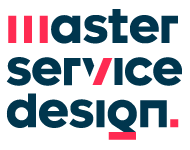Successful Service Design is often build on a foundation of collaboration between individuals to create value that can benefit both parties. A fundamental enabler of collaboration is trust between individuals, who are sometimes even complete strangers. Do you recall a time when you were on a roadtrip and a eagerly waiting hitchhiker tried to flag your car down? I am sure most of us would have several thoughts running in our heads – ranging from lack of trust to fear of having an annoying travel companion ruin our “me time”. Apparently, a well designed service has the power to transform our beliefs as in the case of BlaBlaCar, a road transportation Service that enabled people driving intercity in cars to optimise their journey by giving a ride to others who required it.
A sensitive understanding of people’s fears allowed the designers to create a purpose based social network that allowed people to connect in a way that build trust and comfort. Individuals would have to put a photo and contact details along with links to their existing social profiles on Facebook, twitter, linked in ect to provide a sense of legitimacy to other users. Members also could list their preferences, based on their personality and desire to socialise during the journey – Bla being a quiet companion, Blabla signifying a reasonably chatty person to blablabla representing a person who would largely chat the entire journey.
While these elements allowed other members to know each other, testimonials and ratings of each other, gradually build a network of trust amongst strangers. Additionally, ensuring members would pay and book their ride online increased levels of commitments and reduced cancellations dramatically. Blabla demonstrates a wonderful example of value exchange between individuals and the success of this service is largely linked to the humanistic approach to design that was able to illuminate inherent human fears. In fact they were able to transform an activity that fuelled distrust into a enjoyable human interaction.

